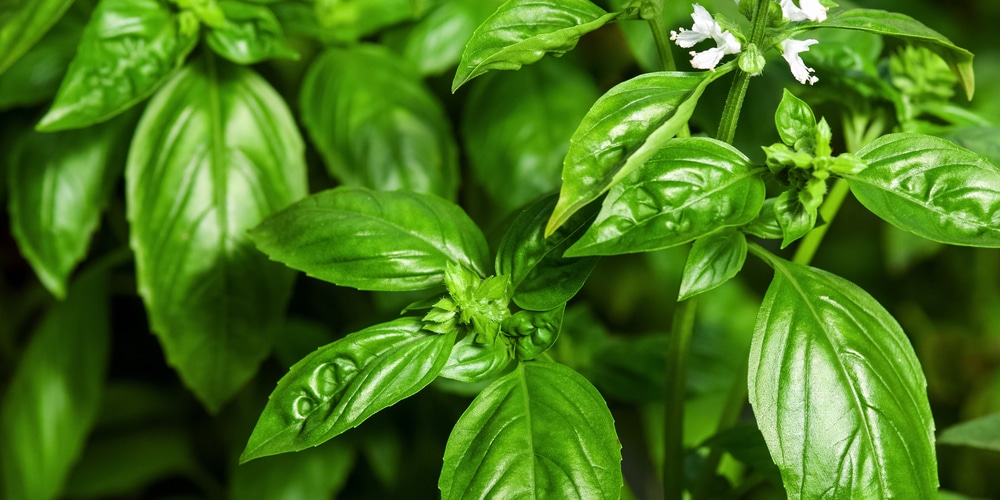Basil (Ocimum basilicum) produces plenty of buds to make seeds. Slowly, the basil plant flowering process turns the stems woody. But the young and tender-looking leaves will be no more. So, you might want to stop it as soon as possible.
Whenever this aromatic plant flowers, basil gets tall and stops producing large leaves. In fact, the plant redirects all of its energy up to the tips where the blooms appear.
How to stop basil from bolting? The short answer is by nipping the tips to prevent flower formation. Its floral hormones only activate when the external conditions are ideal. So, you might want to prune the tips more frequently in summer than in spring or fall.
Why Does Basil Flower?

We may pick and choose this plant for its fragrant aroma, but the Eugenol compound in the leaves has another purpose. In fact, not only does the scent attract pollinators, but it also protects the plant against bacteria, herbivores, and pests.
As soon as the plant grows lush and bushy, basil initiates the last phase of its life cycle.
When a basil plant flowering process begins, small flowers appear on the top of the aerial part. But why? This versatile herb prepares to produce seeds during summer to let them fall in September or October.
Even though you can find several varieties, both for culinary and ornamental purposes, all basil plants are annual plants. So, they only get one growing season per year.
These plants’ life starts from seed and ends with the reproductive stage. This is why the leaves turn bitter after blooming as the plant has fulfilled its purpose.
How To Stop Basil From Flowering?

The constant battle to maintain basil in a vegetative state is a little bit time-consuming. Basil is a prolific, stubborn plant that will not stop bolting until the temperatures go down. After all, it loves the heat and will not come on until the warm season come.
As flower stalks come on in the summertime, you should cut them off if you are growing them for the foliage. Hardy to zone 10, the only way to stop the basil plant from flowering is to remove the buds. But if you want to control any basil plant flowering preventively, you should prune the tips every two weeks.
Pruning your basil plant regularly from seedling to adult will keep it in an even better shape. Also because when the heat hits, the stems tend to become spindly and unattractive.
How To Pinch Basil Flowers
You can use the following instructions to train even baby seedlings. As a result, restraining the basil plant flowering will be a lot easier. Also, this technique works for both single and crowded setups—it does not matter if you grow a single plant in a pot or dozens at a time.
All you need is some scissors or garden snips for deadheading. Of course, you can use your fingers/nails to make the little pinch or the cut. But with a tool, you can make cleaner cuts that will not overstress the plant.
- Select a basil plant and identify the first set of true leaves. For clarity, the true leaves are the pair of leaves that the plant produces after the first rounded ones (Cotyledons).
- Make the cut about 1/4 to 1/2 inches above the first set of true, heart-shaped leaves. Fret not because new branches will form on both sides—you may even notice new tiny shoots ready to grow as a backup.
- Wait for the plant to make the two branches, each with two sets of leaves, before repeating. If you do not see new shoots this time, do not worry. The plant will eventually grow them as long as you leave enough room between cuttings.
- Enjoy the cuttings on your pizza, tomato sauce, or recipe!
Can You Eat Flowering Basil?
The phenolic compounds inside the leaves and flowers are perfectly edible. They might not taste the same as before, though. But on the bright side, they might be healthier as some purple leaves and white, purple flowers contain lots of Anthocyanins, according to some studies.
Just beware that ornamental basil plants may not have edible flowers if you use pesticides!
Related Article: What Herbs Can be Planted Together? (Companion Planting)